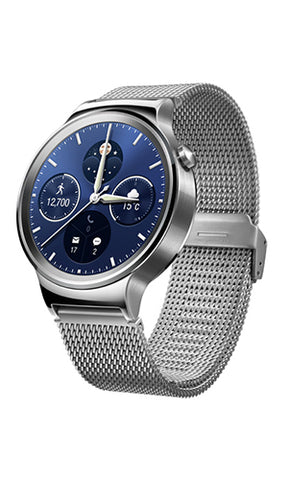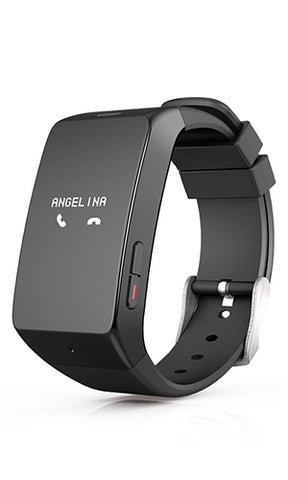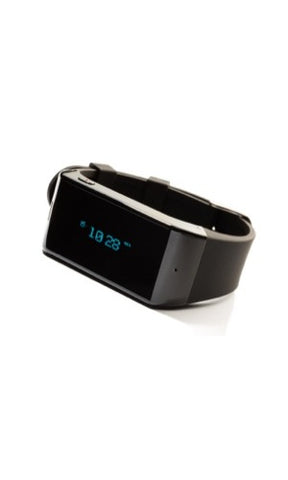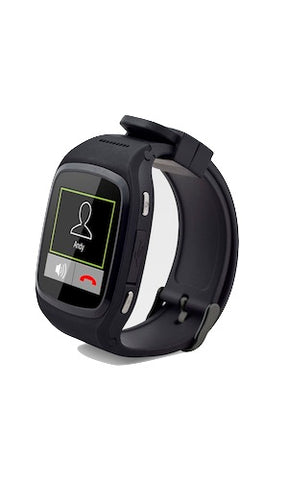From policing to life-logging, wearable cameras aren’t just for Glassholes
Written By
Mark Killian
Google Glass was hated by the general public for two reasons: First, it’s about as fashionable as dental headgear; second, Glassholes make everyone around them feel uncomfortable — and not just because they look painfully awkward.
I’ll never forget the first time I encountered Glass in the wild. It was the start of my workday, I was wearing a wrinkled shirt and purple bags beneath my eyes. The moment I entered the breakroom, I was greeted with, “Hey Mark, smile for the camera.” Like Garfield, I’m not what you would call cheerful before I’ve had my morning cup of coffee. Add the disinterest in being filmed to the mix, and I’m liable to create an HR report of epic proportions.
Fortunately, I returned to my desk and cooled off by watching fail videos for the next thirty minutes. Then it hit me like a mountain biker’s front tire to an undetected pothole, a wearable camera can serve many purposes aside from making water-cooler interactions awkward.
EXTREME content
Thanks to GoPro, the Internet is flushed with first-person footage of death-defying stunts. There are also plenty of less exciting implementations of the technology available for viewing, but even those are worth a laugh. The proliferation of wearable cameras has done wonders for viral entertainment, and devices like Soloshot are pushing the industry even further.
With Soloshot, users mount their GoPro (or competing product) to a smart base that follows corresponding Tags worn by the athletes. To put it in layman’s terms, it’s like having a personal cameraman.
You simply set up your Soloshot camera base a safe distance from the action, strap the waterproof/shockproof tag somewhere on your person, and go about your business while the Soloshot follows your every move. You can even set it to zoom in or out as you approach the base, as long as you use one of the supported camcorders — most of which are Sony. The Soloshot system also allows you to take photo bursts by tapping the Tag 15, 30, or 45 seconds before you perform your stunt.
Soloshot may be the first cameraman replacement to reach the market, but there’s another auspicious wearable hovering in the distance, literally. Nixie is part drone, part smartwatch, and all concept at this point, but the idea was strong enough to win Intel’s Make It Wearable challenge. To sum up their pitch video, Nixie is a drone with a built-in camera that folds around your wrist until you release it into the sky like a trained falcon. The device then films you as you scale a rock face, slackline, or stand awkwardly in a field with one of your closest friends.
Is Nixie a pipe dream? Probably, but as far as I’m concerned, any device that keeps Fail Army’s YouTube arsenal locked and loaded is a friend of mine.
Educational content

Remember how badly I was ragging on Google Glass a little earlier? Well, I partially apologize for that. Much like Vibram Fivefingers in yoga class, there is a time and a place for Google Glass: the hospital. In a medical setting, Glass is by far the most helpful and, dare I say, attractive recording device on the market. When pitted against the Vuzix M100, Epson Moverio, or any of ODG’s smartglasses, Glass goes from an eyesore to a sight for sore eyes.
But appearances mean nothing once you consider the convenience of these hands-free devices in any business setting. Whether you’re a doctor performing open-heart surgery, a mechanic repairing a jet engine, or chef catering a high-profile event, smartglasses and other wearable cameras make it easier to perform your duties and teach future generations of professionals how to do the same thing.
Exonerating content

If you’ve turned on recent news or happen to be Facebook friends with an extremely disgruntled policeman, you’re no stranger to the uproar surrounding wearable cameras and law enforcement.
In a thorough Gizmodo article published last March — prior to the Freddie Gray debacle — journalist Mario Aguilar examines the long and tumultuous history of police body cams, even going as far as to unearth the technology’s “first real-world test” back on November 11th, 2009 in Fort Smith, Arkansas.
It was on that day that Officer Brandon Davis shot and killed Eric Berry while answering a domestic disturbance call. Fortunately for Davis, his Taser AXON recording glasses caught the entire altercation on camera and freed him of any charges once prosecutors saw that Eric Berry was pointing a loaded gun at Davis and his fellow officers.
Aguilar also references the convincing Rialto, California pilot project, where violent encounters dropped by 59 percent and citizen complaints fell by 88 percent once cops were equipped with body cameras.
However, Aguilar plays Devil’s advocate by bringing up the ugly truth that during a similar program in New Orleans, “the Justice Department found that [out] of 145 incidents in which New Orleans officers equipped with body cameras used force, just 49 of those incidents had footage available.” If corrupt cops test your faith in on-officer body cams, fear not. Pretty soon, it may be you doing the recording.
Egocentric content

We are all narcissists. That’s the main takeaway from a 2010 New York Times article about how Narcissistic Personality Disorder was removed from the latest Diagnostic and Statistical Manual of Mental Disorders (DSM-5). Since the advent of social media and smartphones, the majority of the world fits the profile of a narcissist.
If that makes you sad, sorry, but things are only going to get worse thanks to life-logging devices like the Narrative Clip, Autographer, and MeCam. But hey, with any luck, these 24/7 monotony capturers may be the key to keeping us safe from smooth criminals and crooked policemen. Or at least entertain us like a Russian’s dash cam.
Tags: Augmented Reality Glasses, Camera for Sports, Featured Items, GPS Tracker, HomePage Featured, HUD Glasses, Smart Glasses, Wearable Cameras




